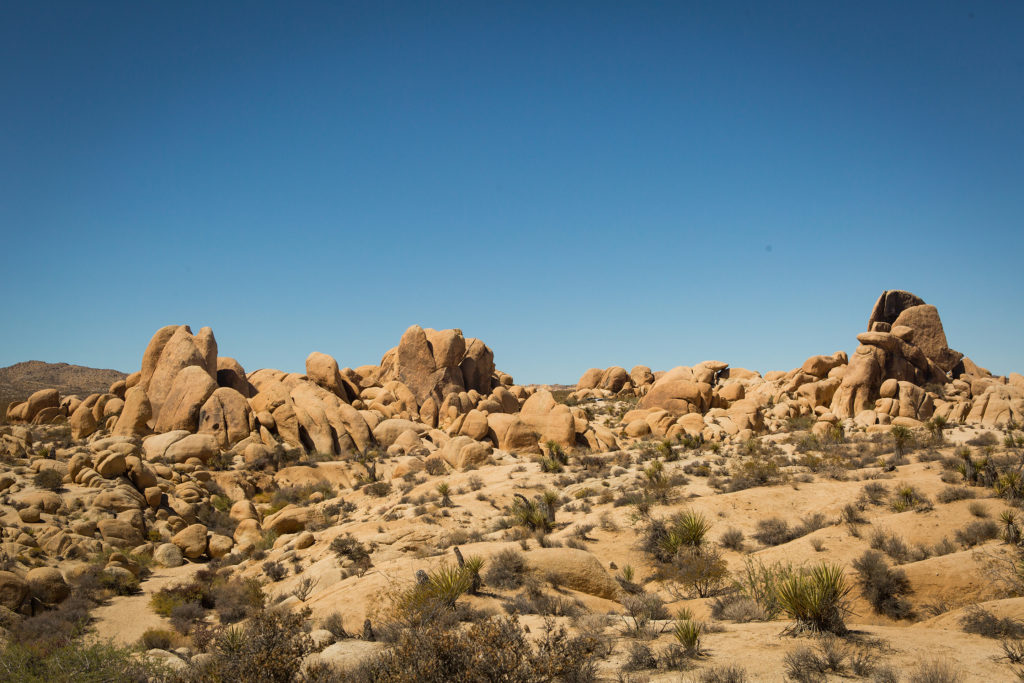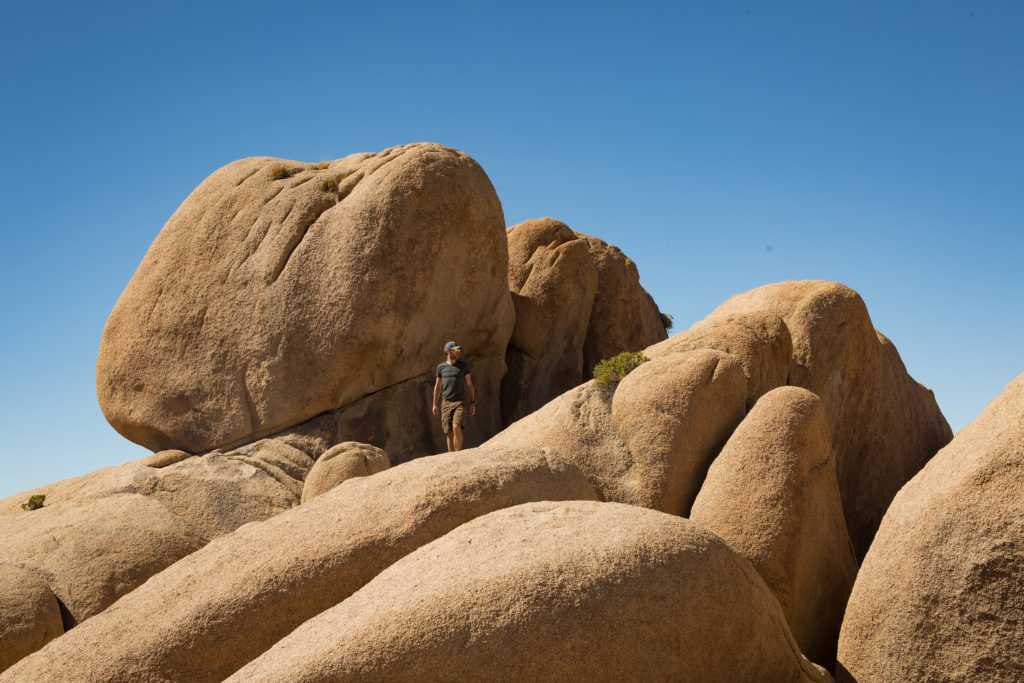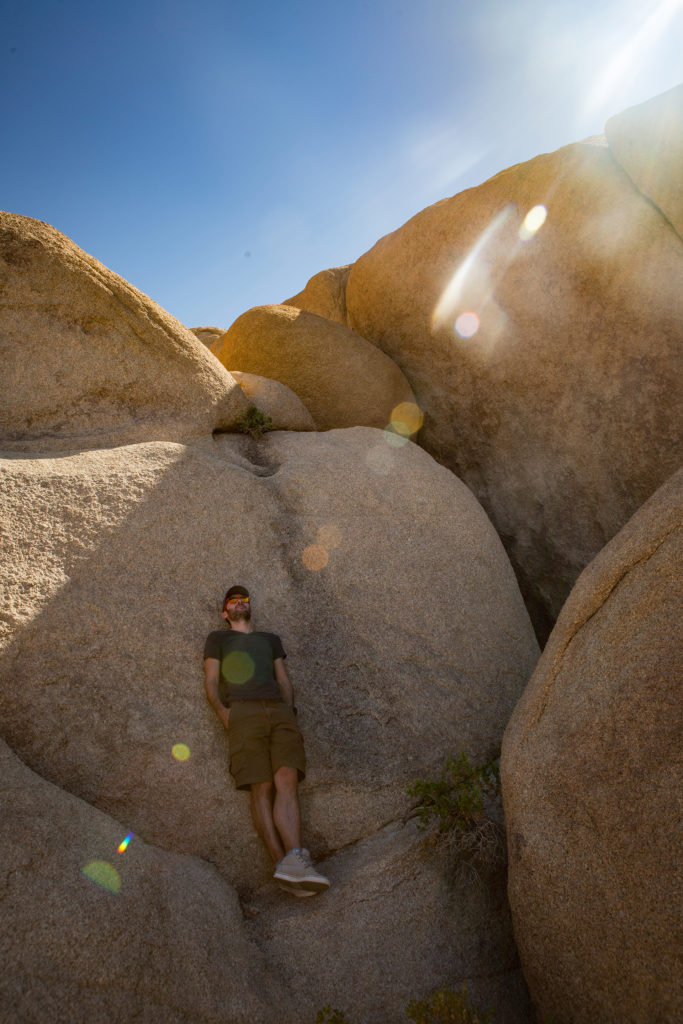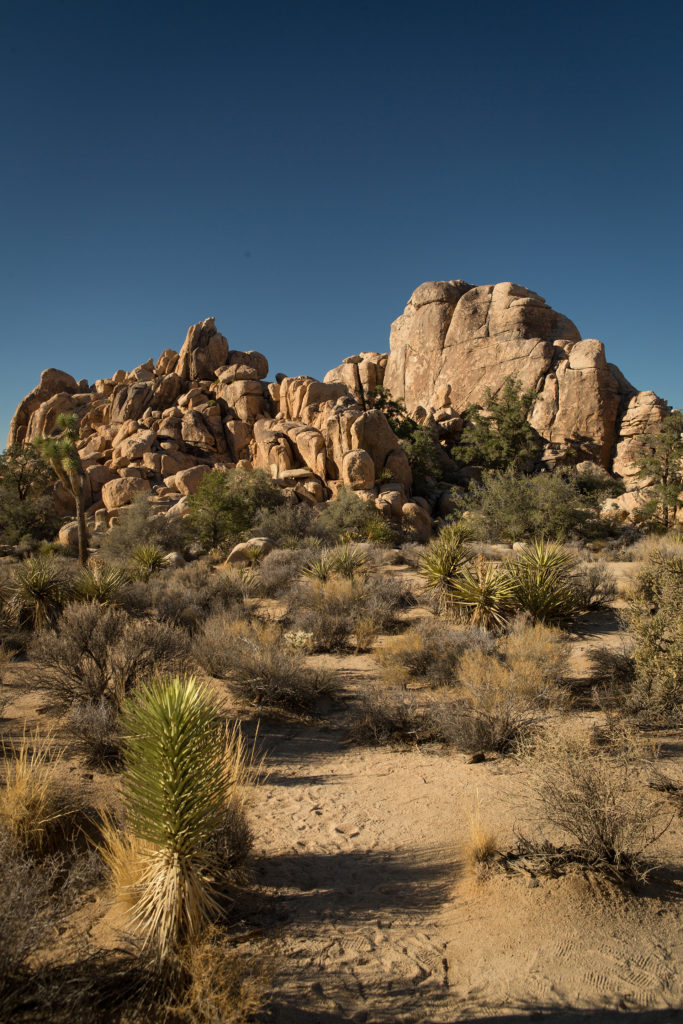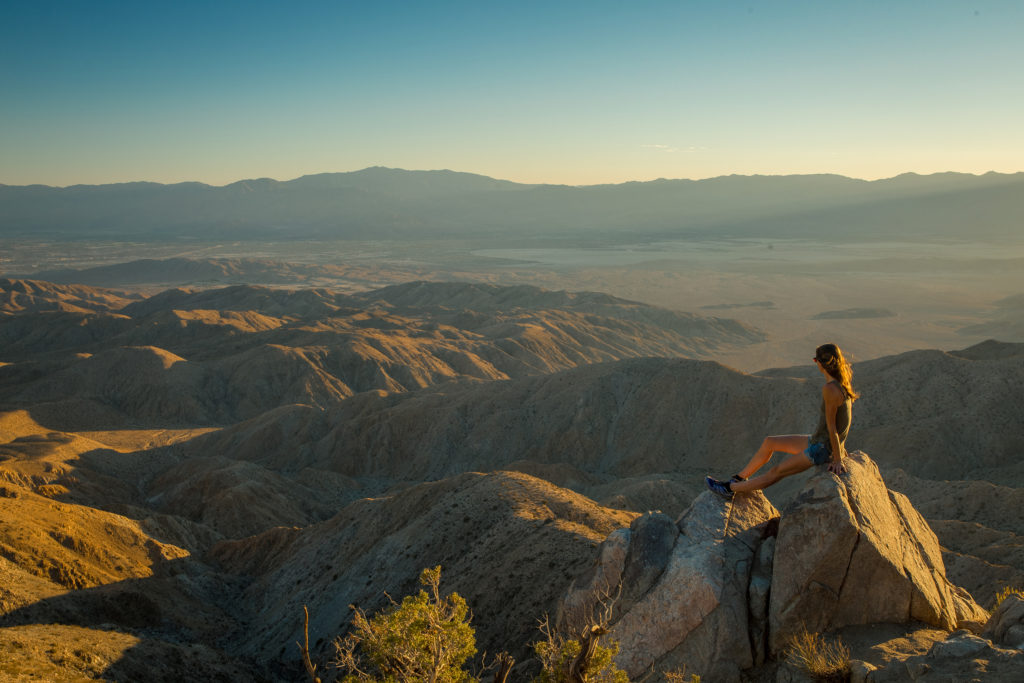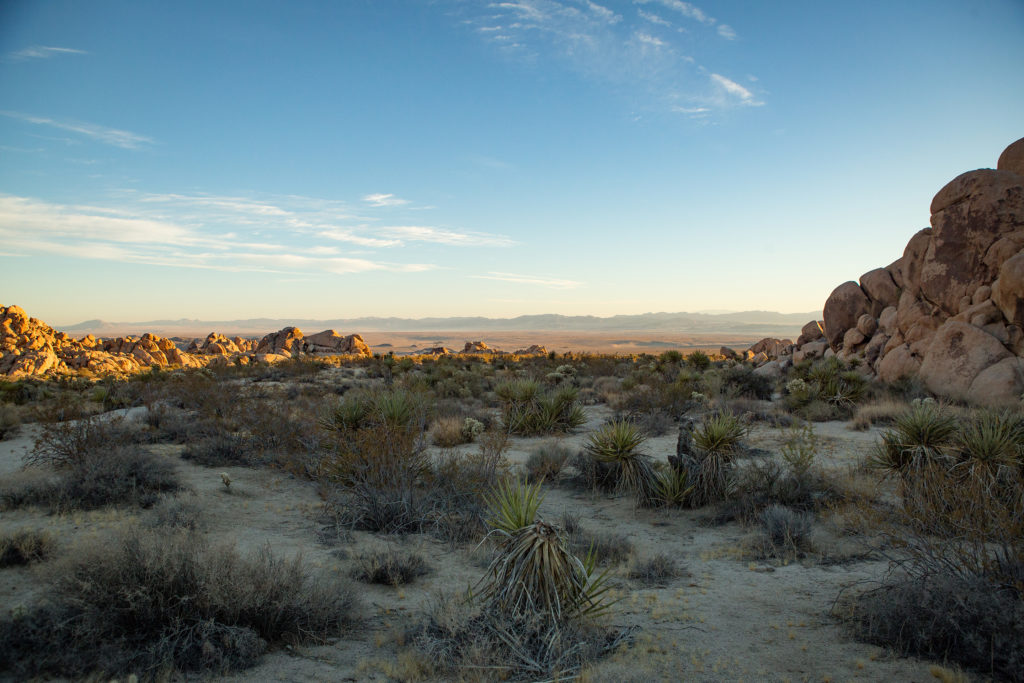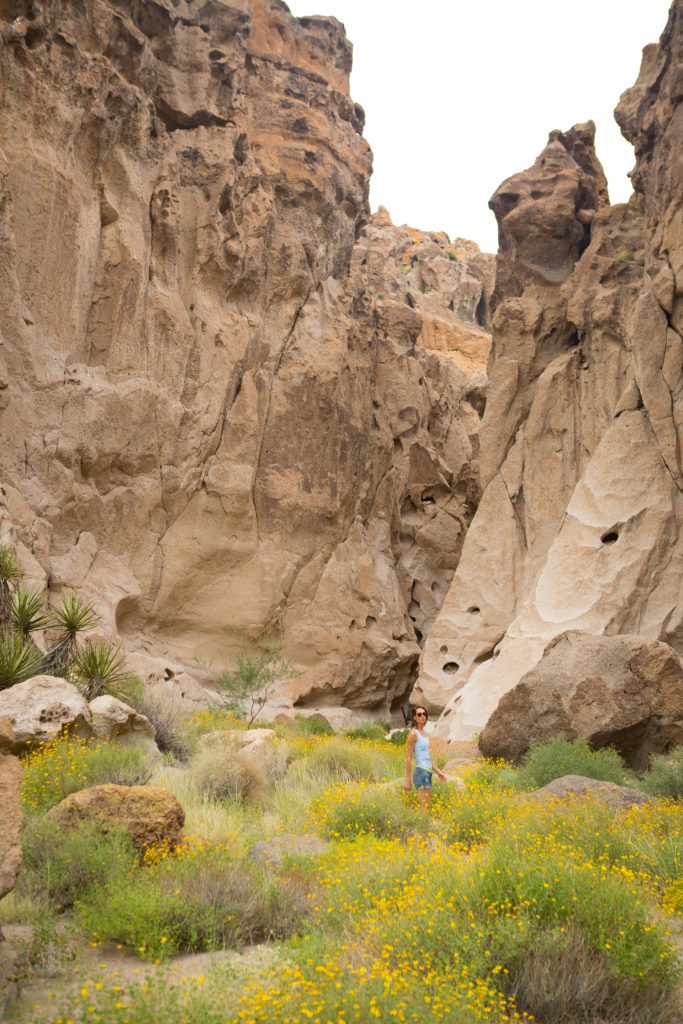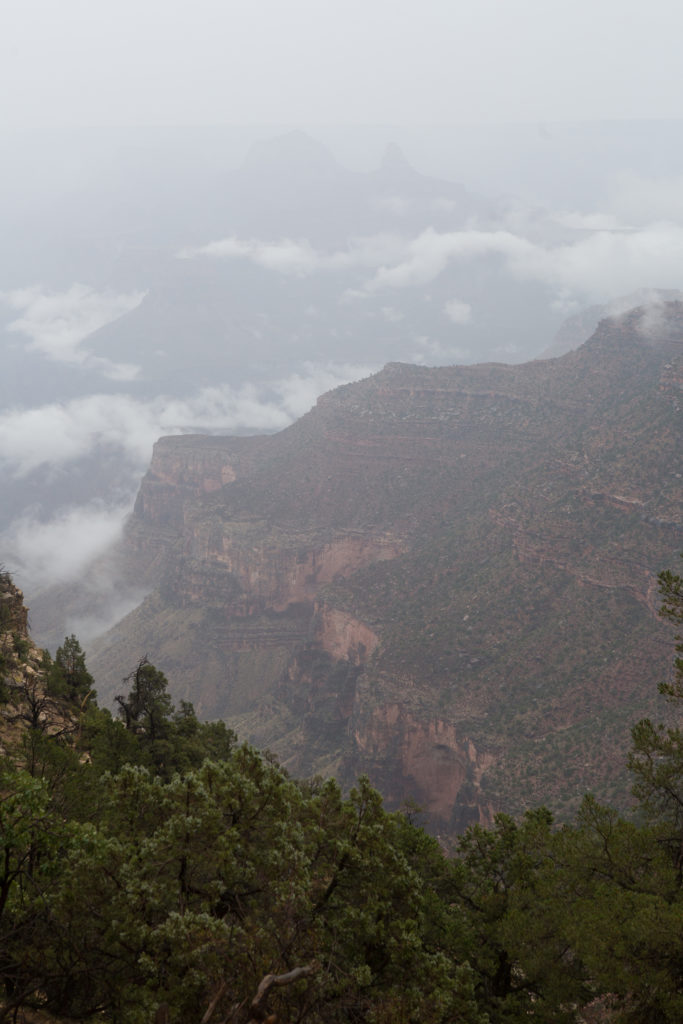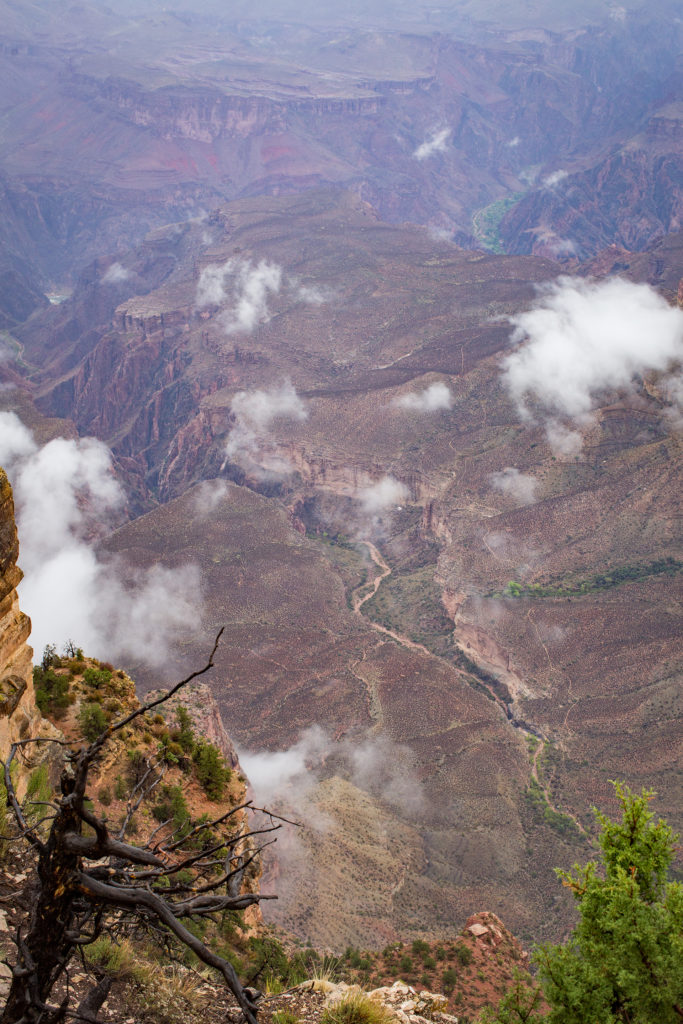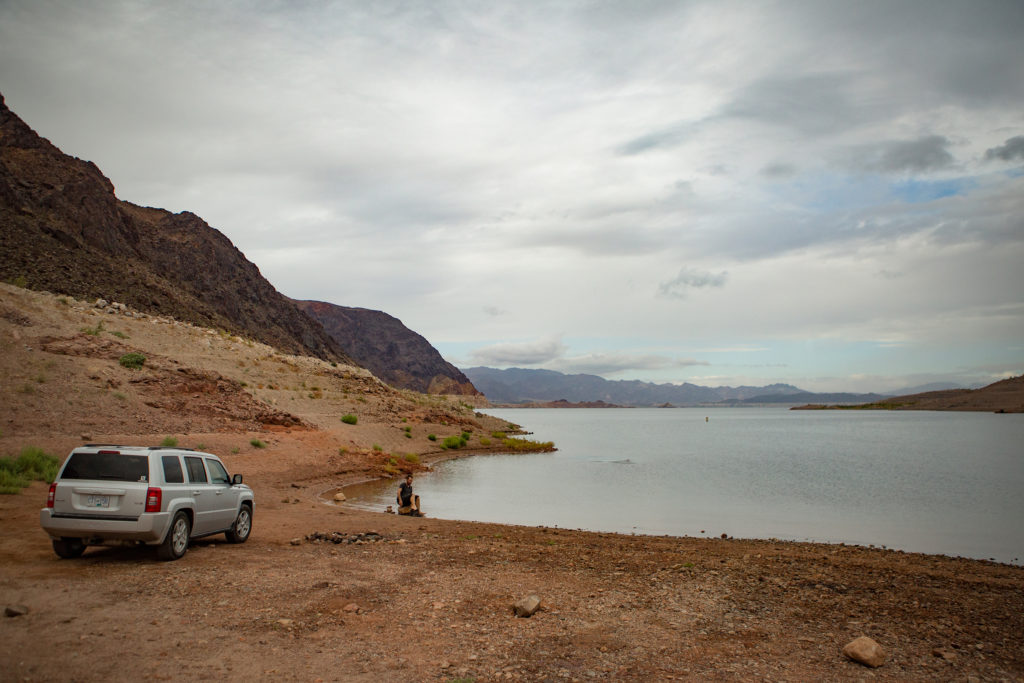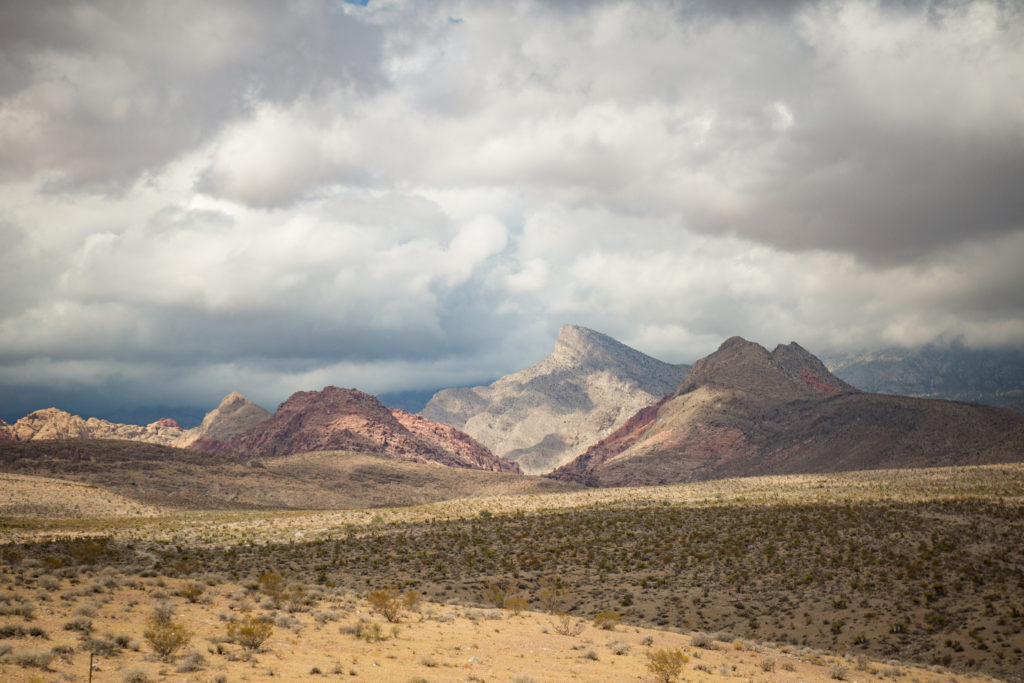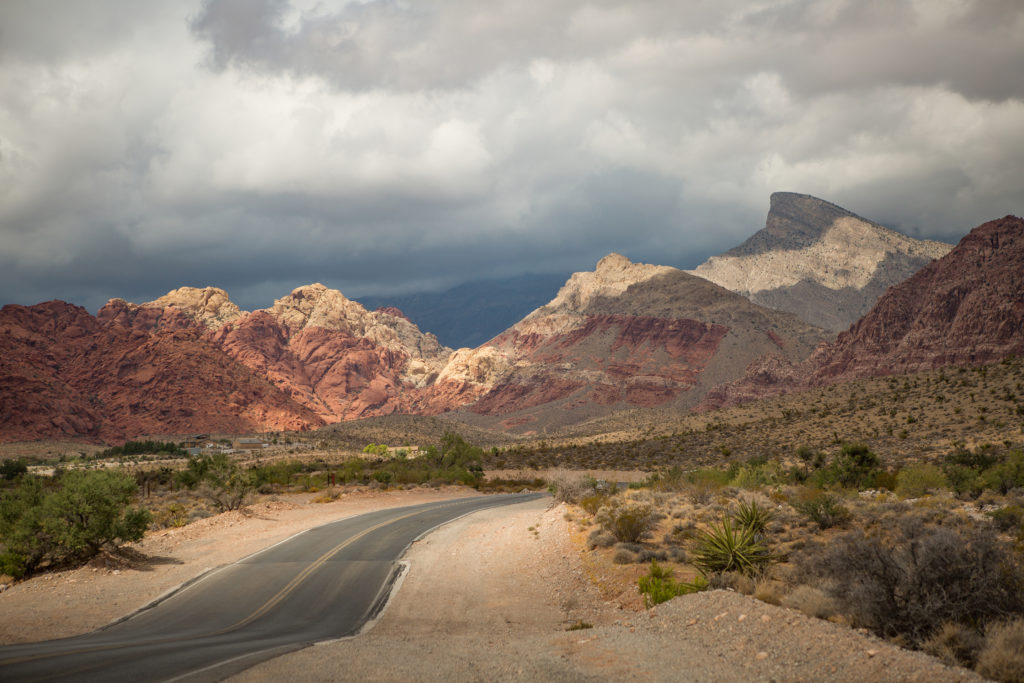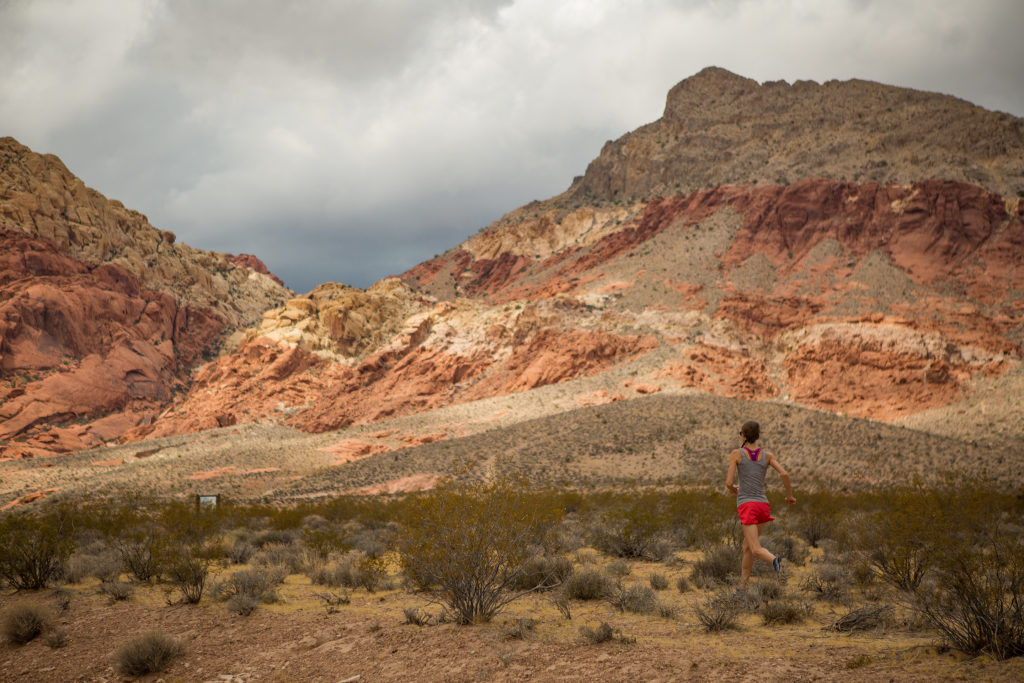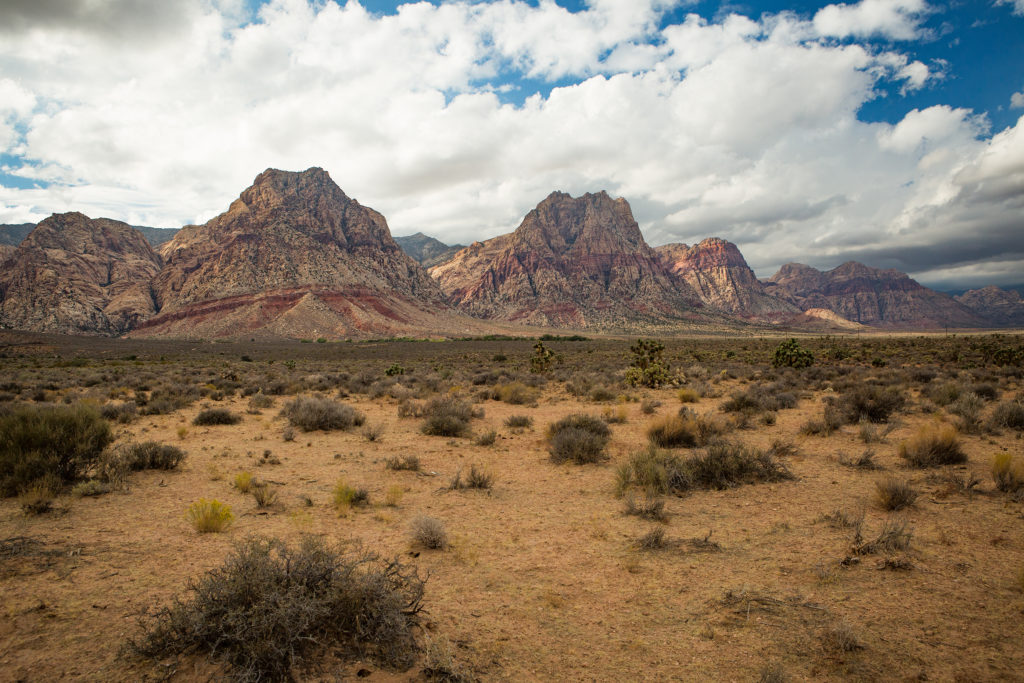In September, Brice and I went on another road trip in the United States.
More specifically, we drove from Big Bear, Ca, to Las Vegas, NV crossing through a couple of national parks and making a one-day detour to the Grand Canyon.
The idea of this trip actually started with a trail race. Our friend Tyler had signed up for his first 100-mile race (160km), the Kodiac 100, which was taking place in Big Bear on September 16-17. Brice offered to come down to pace him during the race. For those who are not familiar with trail running, a pacer is a person who runs along the runner for portions of the race. They are not allowed to carry anything for them or help them in any way while running, other than bring company and mental support on long races. They can help at aid stations though, in making sure the runner gets food and drink or anything else they need available at the station. Usually pacers are allowed to come on 50-80km into the race, and runners can have several pacers taking turns throughout the course.
After a bit of planning, we agreed that Brice would pace a first time between km 50 and 90. Then another friend of Tyler, Philip, would take over from km 90 to 128. Then there was a short stretch of 8km between two aid stations, and I offered to run it with him. Then Brice would come back on at km 136 and would finish the race with Tyler.

The race started on September 16, but Brice decided he was going to drive down and take a week to explore the country while on his way down. Originally, we thought I could fly down for the race, then Brice and I would drive back up together and make stops on the way. Looking at how much time I could take off though, and how long it would take to drive back up, we realized it would be a better use of my off-work time to stay down in California/Nevada and explore the area, rather than spend most of our time driving and only stopping on the side of the road.
So after Brice had been on the road for one week, I flew down to LA after work on the 15th. Brice picked me up in our little jeep and we drove to Big Bear, two hours east of Los Angeles.
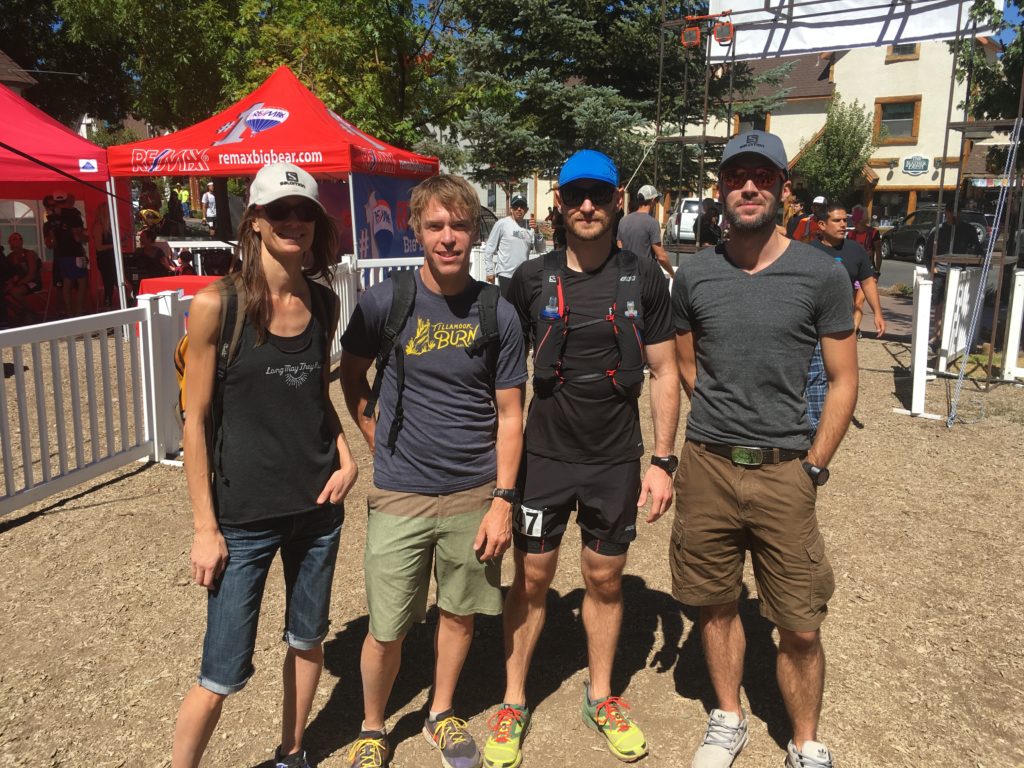
The race started at 12pm (midi) on Friday. We were able to see Tyler at a few aid stations along the way: He came through the first one (km20) at around 3pm. Then we saw him again at around 8:30pm, at the aid station Brice started running from. Kaitie (Tyler’s girlfriend), Philip and myself went back to the cabin to get a couple hours of sleep, then at 2am, we drove to the next aid station (called The Dump) where Philip took over pacing. Brice and I were able to get a few more hours of sleep while Tyler ran from the Dump to a station called Sugarloaf. Sugarloaf was the start of an “out-and-back” portion of the course, which means the runners go in one direction for a number of kilometers then turn around and run the same path in the other direction. In this particular instance, although the out-and-back was only 16km return, it started with a gnarly ascent of about 3000 feet (1000meters), followed of course by the descent of the same.

Tyler came through Sugarloaf for the second time around 1pm, and that’s where I started running with him. It was really impressive to do to a portion with him. At this point he had been running for over 24 hours, and through a full night, so he hadn’t slept for over 30 hours! Those 8km were fairly easy (for me anyways, i was running on fresh legs :P), no significant elevation, and some nice downhills on smooth wide trails, mostly covered in a thin layer of sand, actually quite nice for running. The section ended in a residential area, and I passed the baton back to Brice, who paced Tyler for the last 25km until the finish line. Tyler finished at around 6:30pm, for a total of 30 hours and 32 minutes of running! Definitely one of the most impressive accomplishments I have been fortunate to witness!

It was really fun to be there to support him, and be a part of his adventure! And, since the 17th was my birthday, we even had cake (thanks Kaitie!) Doing something I’d never done, in a place I’d never been, was definitely a good way to spend my birthday.

The adventure didn’t stop there of course. The next morning, Brice and I woke up before sunrise and hit the road for the first day of our exploration. First stop: Joshua Tree National Park.
The park is a very popular destination, and it is pretty easy to explore several areas in just one day. Although it is considered a desert, there is an amazing variety of plants and animals that live in the 800 000 acres of the park. Some of the most famous features are of course the Joshua Tree (which is in fact a Yucca, not a tree), and the formations of rocks which seem to have randomly sprouted from the earth in the middle of otherwise very flat desert valleys.

We entered the park through the Cottonwood visitor Center, on the Southern side of the park. After taking a quick stroll on the Cottonwood Spring trail, we hopped back in the car and drove along Pinto Basin road, to the Cholla Cactus Garden. Cholla Cacti are notorious for being “jumping” cacti. If you come too close to them, and brush up against them, a whole chunk will separate from the plant and attach to your skin via hundreds of spines. Spines are really hard to remove due to the microscopic barbs that covers their surface.

We (carefully) walked around the Cactus garden – but I still managed to get a couple of spines right through my leather boot. Thankfully they didn’t get into my foot.
The temperature was close to 35 celsius, which made it a bit challenging to stay out in the sun too long. So jumping in and out of the car and driving to different locations was a pretty practical way to get through the park. In the winter when temperatures do drop a bit, there are a number of hiking trails throughout the park that are probably great to explore. But for now, we kept with the AC-ed option of driving.
As a side note, as for any road trip that is going to take us into remote areas, we made sure to have some essentials in the car: a 10-gallon container of water (we went through a LOT of water on that first day, a lot more than we thought we would need), 5 gallons of extra gas in the trunk, firewood, food for 4 days and a generator/car booster in case our car battery went dead.
After the cactus garden we drove a little while longer on the same road until we reached the first rock formations that the park is famous for. The rock piles are indeed pretty impressive. They started as eruptions of molten lava through the ground, which then solidified as it settled on the surface into what is called monzogranite. Water erosion and flash floods sculpted those monzogranite over millions of years, into the curved, smooth shapes that they are now.
There are several areas of similar formations in the park, most of them in the North-west portion. We explored a few of these areas, Jumbo Rocks and Hidden Valley mainly. Those are also very popular with rock-climbers.
After a few hours of climbing, jumping and running around the rocks, we headed to Keys Views, which was recommended as being a great spot to watch the sunset. It did not disappointed…
Once the sun had set, we made our way North. To access Indian Cove, the campground that we had picked for the night, we had to drive out of the park through the West Entrance station, then head east on road 62, and then enter the park again on Indian Cove Road.
The campground, which offers about 100 spots, was nearly empty that night. We only saw one other car as we drove in, and another one turned out to be set up further passed our camp, as we found out the next day. Since the spots are nestled along the rock formations, it was easy to find an area where no one else was in sight (which would probably be impossible however is the campground was full).
Being in a desert, I was expecting temperatures to drop at night and having to put on some extra layers to stay warm. But actually, the temperature only lowered to a very comfortable 25ish degrees Celsius. Being used to camping in the BC rain-forest, where it can get cold and humid even in summer, I was pretty pleased with this new camping experience. The moon was nearly full that night and pretty much lit up the campsite enough that we didn’t need head lamps to walk around. We decided to keep the top cover of the tent off and sleep in the moonlight…
The next morning, we packed up and got back on the road, headed north towards the Mojave National Preserve. which is US’s third largest national parkland outside of Alaska. Once again, since we only had one day to explore, we looked up some of the most interesting spots in the park and drove from one to the other. It was another very hot day, so hiking was not in the cards, but we still managed to see quite a bit. We started from the western-most south entrance, and drove up Kelbaker road, 23 miles until the Kelso Sand dunes, the second largest dune system in the United states.
Then we continued on North, past the Kelso visitor center, all the way to the Cinder cone lava bed. The official park map indicated a “lava tube” in that area, so we decided to go check it out. After seeing a tiny sign on the side of the main road, we turned off and drove down a dirt road til we couldn’t drive any further. We parked and went up a hill, not quite knowing how far we would need to go. Just at the top of the hill, we found a big hole in the ground, and another one just a few meters further, with a metal ladder. So down we went into the earth. The hole turned into a tunnel with a short section which we actually had to get on all-four to get through. On the other side was a small cave, with beams of light shining through the bigger hole we had seen at the top.
It was actually the perfect spot to hang out for a while, as the temperature underground was much more bearable than outside (I think it was close to noon when we were there).
So we stayed there a while, mainly playing around with the camera and throwing dirt up in the air to see how much we could make the beam of light pop in our photos.

For our next stop, I figured we would drive across the desert on Mojave Road, since on the map it seemed to be the shortest way to get to Mid Hills and Hole-in the-Wall Canyon. The road started off fairly smooth, with tracks going somewhat deep into the sand, but nothing that our little jeep couldn’t handle. We drove about 45 minutes on the narrow path, surrounded by Joshua trees. Eventually though, the road became more and more rough, with rocks and small boulders sticking out of the ground. Brice showed off his mad 4×4 maneuvering skills, but we ended up facing a rock that just wouldn’t let us pass. Our jeep didn’t have the clearance and no matter which way we approached it, the bottom would end up resting on the rock, preventing us from passing through without damaging the underside of the car. We checked the GPS to see how far down the road we were. We might have attempted one more time to pass if the GPS had indicated we were near the end. But it turns out, we were barely halfway across to the other side.

So we decided that instead of getting stuck on this rock – or another one further down, we would just turn around and drive back, taking the long way around onto the main paved roads.
Somehow we only took 20 minutes to drive back to the main road, and we drove down Kelbaker, back to the Kelso visitor center. We were pretty hungry by then, but with temperatures close to 40 degrees Celsius outside, we weren’t too keen on having an outdoor picnic. The two park employees at the visitor center let us have our lunch inside – there was actually a huge bar in the main lobby, and what seemed to be a kitchen under renovation in the back, so I’m guessing they might actually plan on having a restaurant of sorts there at some point.
After lunch we got back on the road, and up Kelso Cima Road this time, then turned right onto Mojave road (the same as the one we almost got stuck on earlier, but that portion, east of Kelso Cima, is wider and much more driveable than the western portion). From Mojave we turned right on Black Canyon road and drove south to Hole-in-the-Wall. We didn’t really know what was going to be there. We found ourselves at the entrance of the Banshee canyon. The canyon was formed millions of years ago when a volcanic eruptions covered the ground with lava and gas. The gas dissipated, leaving holes in the solidified lava formations. A short trail takes you down into the canyon, and out the other end. You can continue walking all the way around the outside of the canyon back to the starting point, or go back the way you came through the canyon, which is what we did. The trail is called Ring Trail, mainly due to the few metal rings that have been anchored into the rock to help descend a few meters into the lower portion of the canyon.
The area was pretty incredible to see, this sudden eruption of rock walls in an otherwise flat desert landscape. It was even more surreal that there was no one else there, we pretty much had the place to ourselves. After walking and jumping around on rocks (and trying to chase wild rabbits that were hopping around in the surrounding desert shrubs), we said goodbye to our unexpected playground and headed out. We had about 45 miles to drive (70km) to get to our campground for the night, but we got to enjoy a pretty amazing sunset as we were driving back on Black Canyon road. It was dark by the time we got back to the Mojave/Cima Road intersection, so we didn’t get to see much of the park on the last stretch of northbound road.

The campground we decided to stay at was clearly indicated on the Mojave Preserve map, in Nipton, just a few miles east of the north entrance of the park. When we arrived in Nipton though, all we could see in the dark was a closed coffee shop on one side of the train tracks, and a RV park on the other side. We drove around the RV park, thinking the campground must be there, until a young guy on a bicycle rode up to us, asking us what we wanted. He didn’t seem too welcoming at first, but got much friendlier when he realized we were just tourists looking for the campground. He told us the campground was on the other side of the road, near the coffee shop. So we drove back there. As we arrived, another man came up to us and took us around behind the coffee shop. The campground was there, in an area circled by trees. He then showed us the amenities: 2 fully-functioning toilets and showers (with hot water), along with a large sink and mirror, enclosed in a building of corrugated sheet walls. After the sponge bath we’d enjoyed at the tap outside the ranger station in Joshua Tree, a hot shower seemed like a luxury.
The small campground also had a large fire-pit on the one side, so we enjoyed a nice comforting fire before going to sleep. The next morning we were able to see the full extent of the place. Aside from the campground, there were also a few huts that didn’t seem too shabby. The only thing to mention is that the campground is located about 100 feet from the train tracks. A couple of trains came through during the night, which woke us (a train passing 100 feet away might as well sound like it’s going to drive you over), but even with that, it was a pretty comfortable stop for the night, and the access to hot shower definitely made this our fancier camping spot of the trip.
Before the trip, we had debated whether it would be worth it to drive to the Grand Canyon. There are several rims that you can access, but the one that is supposed to be the most scenic is the South rim, about 4 hour east of Las Vegas. We decided that yes, we should definitely do it, since we had come this far anyways.
So on the day after exploring the Mojave Preserve, we got up early and headed East for the world’s most famous canyon. The drive there was pretty underwhelming, mostly highway, and even more so that it rained all the way there. I’m grateful for Tim Ferriss’s podcast interviews that Brice had downloaded, for keeping us entertained all the way there – his interview with coach Christopher Sommer was particularly interesting.
So 4 hours later, we arrived at Grand Canyon National Park. It was still raining pretty heavily, but we put on our jackets and were ready to explore. We walked to the closest view point over the rim and …there it was:
Or was it? Hard to tell, with the thick layer of white clouds that covered the entire stretch of the canyon and obstructed any view of the valley below. Boo. Oh well, it was still pretty cool, we took lots of photo of cliff sides disappearing into the fog.
A few trails will take you from the top of the rim down to the bottom and the Colorado river, and even back on the other side (North rim) if you take a couple of days to hike through. Originally I was hoping to do a day hike as far down as time would allow it, but in those conditions, that plan got pretty compromised. We still walked down for an hour or so along Bright Angel Trail, and managed to get below the clouds and get some views, albeit foggy ones, of the valley.
When we came back up, the clouds had somewhat thinned out a bit, so we walked along the rim some more and got a few more, clearer shots of the Canyon. The original plan also intended for us to camp in the area, and drive back towards Vegas the next day. But we didn’t really feel like setting up a tent under the rain, and since our hike had been on the shorter side, we decided to head back West that same day.
We drove back for four hours and arrived near Lake Mead around 9pm. During his road trip alone down to California, Brice had used the app Ultimate Campground to find camping spots along the way. We looked up camping options near Lake Mead and there was indeed a campground on the shore of the lake. We turned off the highway into a dirt road and drove 3miles in the dark until we reached the lake shore. A couple of other vehicles were already there but the unofficial site was big enough that we could set up our tent away from the other campers.
We were pretty tired after driving 8 hours that day and walking in the rain for 3, so dinner was quick and off to bed we went.
The beauty of arriving at a campground in the middle of the night is that you don’t know what the place really looks like until the next morning. This one (as the previous two nights) didn’t disappoint. This particular shore of Lake Mead might not have been the most scenic, but waking up by a lake is rarely a bad thing. The shore also curved in such a way that if you walked to the left, you’d eventually go around a bend and disappear from the view of the main campground. I walked around after breakfast, and found the perfect spot for a quick dip – and the water was actually warm enough for me to get in. The one sad thing about the place was the amount of garbage left behind by people – mostly empty beer cans and bottles, along with plastic wrappers. I grabbed a garbage bag and picked up everything I could find along the shore on my walk between our camping site and my bathing spot.
Then it was then time to head to our last destination: Red Rock Canyon. But not before a quick stop at the Hoover Dam.
The Hoover Dam, formerly known as Boulder Dam, was built on the Colorado River in the 1930s as an effort to limit floods and provide hydroelectric power. Lake Mead, the largest reservoir (volume-wise) in the United States, was formed as a result of the dam.
My flight back to Vancouver was leaving from Las Vegas at 6pm, so that gave us enough time to spend the day outside. We didn’t really feel like exploring Las Vegas during the day – it seems like more of a night-time destination if you want to get the full experience. So instead we drove past Las Vegas to Red Rock Canyon National Conservation Area, about 30 minutes west of the city. Once again we were greeted by a spectacular landscape:
There’s a small fee to enter the park, and from the entrance, a 13-mile road loops along the edges of the various canyons. We drove about 2/3 of the way and stopped at the Ice Box Canyon trail head. The trail takes you through the open desert for about a mile before entering a narrow canyon. The terrain was pretty rocky, with lots of small boulders to climb over, so it wasn’t very runnable, but the hike was really cool nonetheless. At the end of the trail, we were faced with the vertical wall of the canyon. There was supposedly a way to get to the top, but we couldn’t find it, and we weren’t really equipped to climb straight up, so we headed back the way we came.
We finished driving around the loop and since we still had a bit of time, decided to drive south on 159 (we had come from Vegas on the same road, but from the North). On the way we saw a sign for Bonnie Springs Ranch and decided to go check it out. They offer quite the variety of activities (horse back riding, climbing, zoo….), but turns out the place is pretty un-welcoming if you’re only there for a stroll and don’t intend on taking part in any of those. There were signs forbidding from doing pretty much anything. No picnicking on the picnic tables, no parking, and there was even a no hiking sign at the start of a trail that lead into the desert. We turned around and decided to go look for a different spot to enjoy our afternoon snack. Further down the road was the small town of Blue Diamond. Surprisingly, the town itself had a bunch of signs up forbidding visitors to use most of the small parks around. We did find one park that seemed open to the public (!) and finally had our “goûter”. Both this and Bonnie Ranch were a bit of an odd experience. In hindsight though, both of these were somewhat a sign of one of the major difference between Canada and the US: population. The sheer amount of people that potentially flood any sort of touristic area in the States especially at high seasons, would most likely be a lot more overwhelming than in Canada. Unfortunately, this also probably explains the amount of garbage found at Lake Mead.
And then it was time for me to fly back home. Brice dropped me off at the Las Vegas airport, and after connecting through San Francisco I was back in Vancouver, 6 days after leaving. Brice drove back up and this time didn’t stop much (apparently it rained most of the way back up), arriving in Vancity friday afternoon, after only a couple of two days of driving.
Flying down to LA and back from LV only cost me about 350 CAD, actually less than what it usually takes Brice to fly to Edmonton. This got me thinking that I really want to try and do more trips down to the States. Adding a couple of days vacation to a long week-end would be enough to go explore other areas – I’ve got Utah on my short list…We’ll have to make that a plan for 2017!











